One of the biggest reasons I wanted to go to Southeast Asia was for the food. Some of my favourite foods are noodles and dumplings so it was an easy decision.
When we got to Hanoi, we were bombarded with a cacophony of noises, smells, and sights of food everywhere. Street vendors grilling various meats in their carts, dead chickens on the sidewalk, colorful fruits and vegetables everywhere was overwhelming for the senses and impossible to navigate if you didn’t know what you were doing. Lucky, I had a food/restaurant map from a local so when we were exploring, we would pick a nearby option when we were hungry.
We tried all sorts of food in Vietnam. Local regional dishes like bun cha, different styles of banh mi, and cao lau, to name a few.
We took two cooking classes in Vietnam.
The first one was in Hanoi and was lovely. We were with another couple from the Philippines who were on a quick vacation. Too bad for them the weather was cold. In this cooking class we made deep fried sprig rolls, bun cha, green papaya salad, egg coffee, and beef pho.
Spring rolls (or nem, locally) are everywhere and generally have the same filling where every you go. Some rice noodles, carrot, wood-ear mushrooms, pork or other meat filling, bean sprouts, green onion, sometimes taro and daikon… the list goes on. Seasoned with fish sauce and soy sauce, maybe some sugar and you have your filling ready to go. The difference between Vietnamese spring rolls and egg rolls is the wrapper. In Vietnam, they use rice paper. There are different types of rice paper here. At home, I though there was only one kind because I only looked/could find one type. A thicker more durable sheet that you wet to make fresh salad rolls. The deep fried ones used a thinner sheet of rice paper which gets very crunchy and doesn’t absorb as much oil as a egg/wonton wrapper does.
Another classic dish Vietnam is known for is Pho. Pho is typically a beef or chicken stock that is seasoned with chard onion, ginger, cinnamon, cloves, coriander, black pepper, rock sugar, and dehydrated mushrooms. The fancy ones also include a dried ocean sand worm for flavour. We chucked that in our broth as well. Its very simple once you learn. I tried to make it at home once but the recipes I found over-complicated the whole process. Simply, simmer the broth for as long as you can before serving with bean sprouts, green onion, lime and fresh chilies. It usually does not have any other condiments with it but at home, you will get chili sauce and and hoisin No sign of either of those here. (Update: turns our pho does some with hoisin and sriracha but that is only in Southern Vietnam. The broth in the south was much sweater and all the toppings we on the side). This dish is commonly had for breakfast and is served with wider noodles. There are many different types of rice noodles in Vietnam and the dish is usually named after the noodle. Graham and I will be having pho for breakfast at home.
The next common dish we made was Bun Cha (pronounced Boon-cha). These are grilled pork patties served without fermented rice noodles and a fish sauce. You can either get ground pork or sliced pork seasoned with, ginger, lemmongrass, and chili. Other meats can be substituted in. It is then grilled over charcoal. The dipping sauce is water, fish sauce, lime juice, sugar, chili, garlic, carrot, and kohlrabi. You have lemon balm (a really lovely local herb. Tastes like a citrusy basil), basil, and mint on the side. Very simple and tasty. The lemon grass in everything is amazing. I love lemon grass but it is not an ingredient I knew how to use at home. Now I do.
The next thing we made was a green papaya salad. You see this a lot in Vietnam. It is a very simple salad, but I am not sure if we get green papaya at home so it is something we will have to look out for. We used a fun kitchen gadget that will help us cut everything into strips. Its the thing that gets the carrots all squiggly at Vietnamese restaurants at home. Luckily, our second cooking class gave us one of these gadgets as a gift so we have one to play with at home.
We also made egg coffee, or in my case egg hot chocolate because the coffee has too much caffeine in it. I had been up for 3 days straight at this point, cause Vietnamese coffee is very potent. There is not a lot of dairy in Vietnamese cooking. It was the French who introduced the use of dairy products into the diet which is why condensed milk in used in the traditional coffee.
The origin of egg coffee came from a condensed milk shortage. One restaurant ran out of condensed milk, used frothed egg yolks to substitute the milk. We whipped the yolks with honey, sugar, salt until the mixture turns white (killing any salmonella) and then put it on top of the coffee with some cinnamon. and it is delicious. Turned out when you vigorously beet an egg yolk for that long, the proteins in the egg break down and it becomes safe to consume raw.
All the food we ate came from the street market. We never had a need to shop there, as we never had a kitchen available to us. All the food is locally sourced and fresh. The women set up their stalls at 5-6am. Their families all own farms in the nearby agricultural land, and being the meat or produce in daily. When they are out of goods to sell, they go home, slaughter another pig or pick some more veggies and then come back to town the next day. It isn’t what we are used to at home but you never have to worry about the meat having any diseases or bacteria because is is all very fresh. Locals shop at the markets everyday, preferring them to marts and grocery stores (which are very rare). Stocking up at the grocery store for a week is unheard of. People would rather have their meat and produce fresh and buy it daily. The market closes at night and nothing is left out and it happens again the next day.
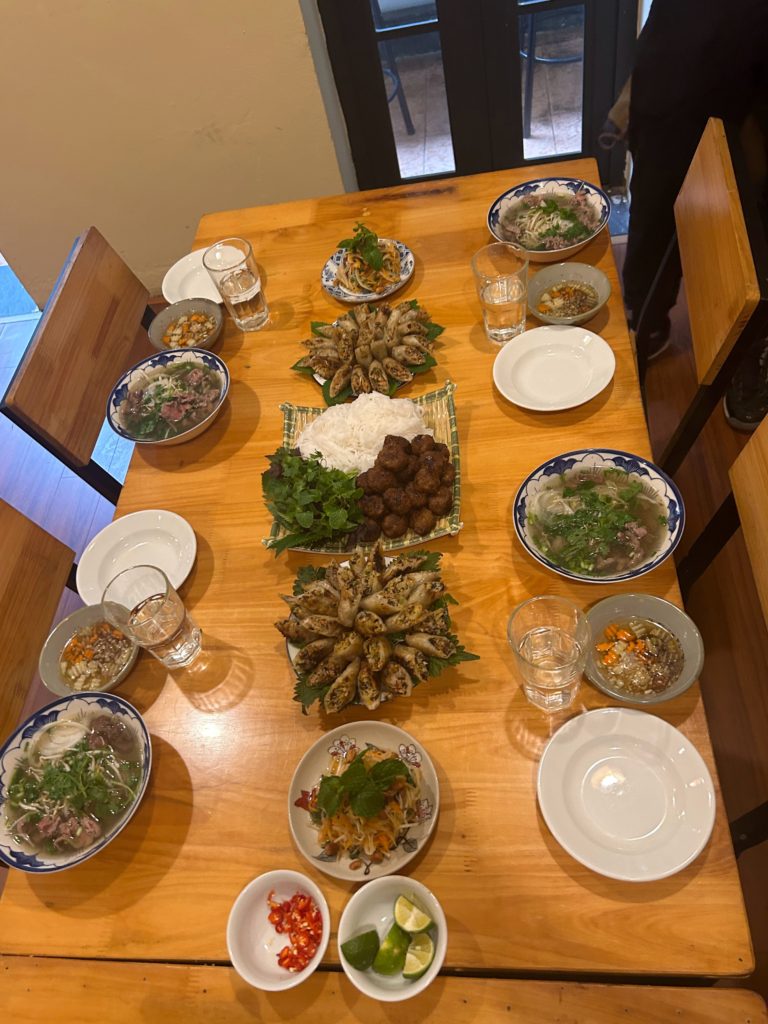

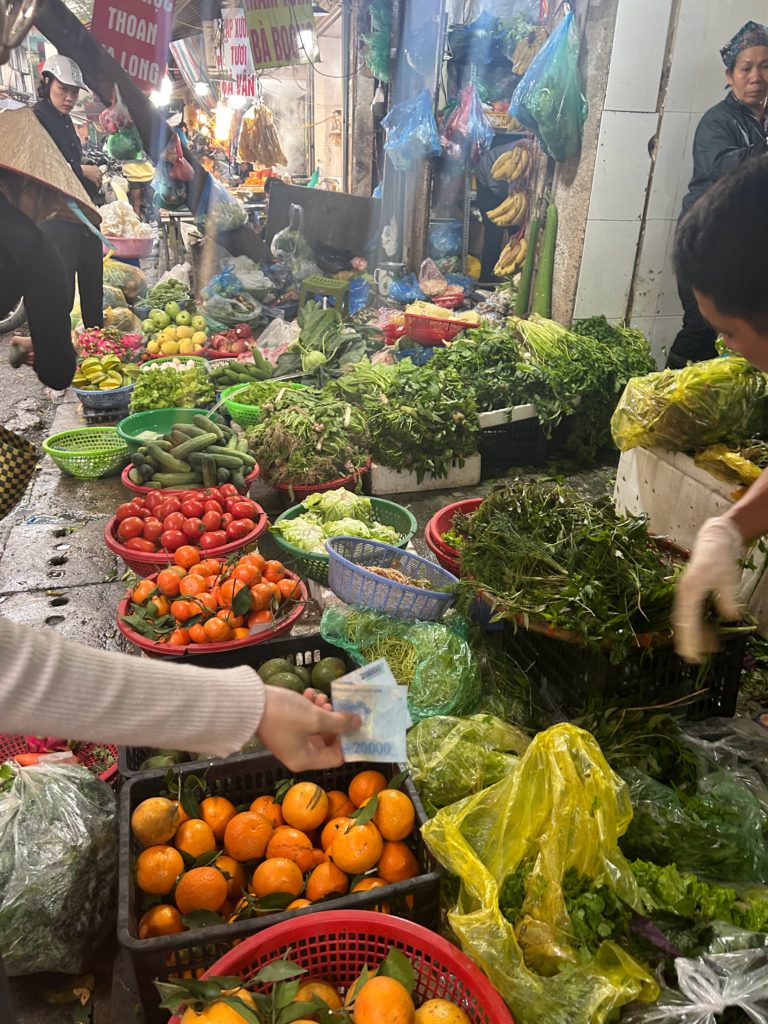
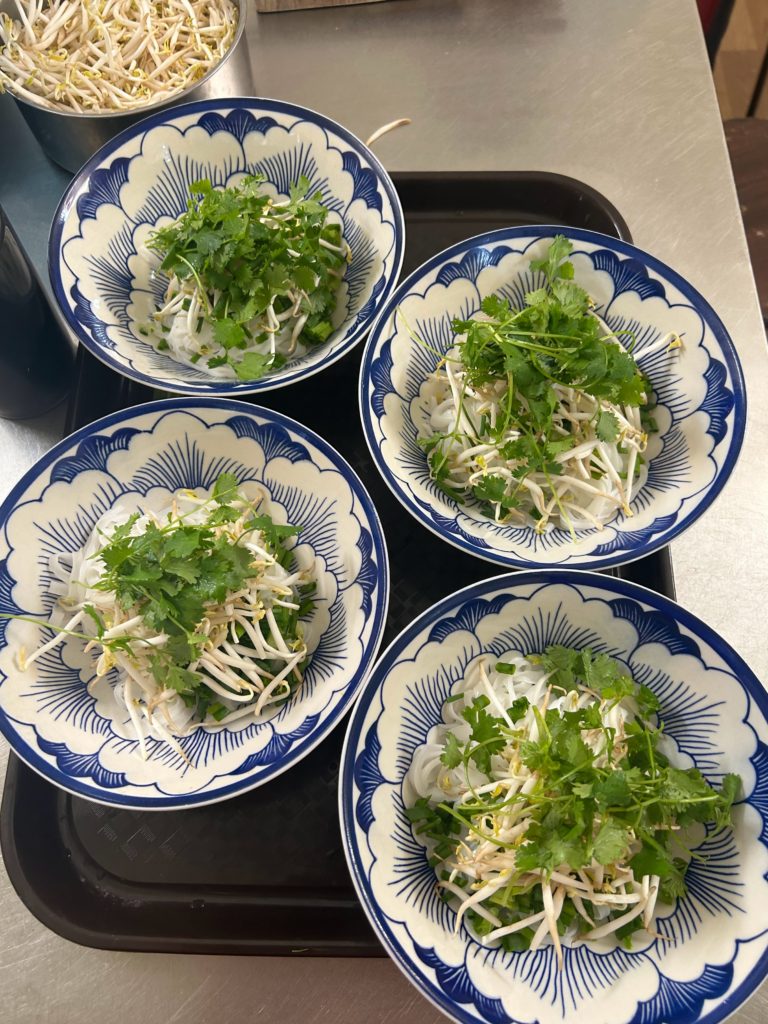
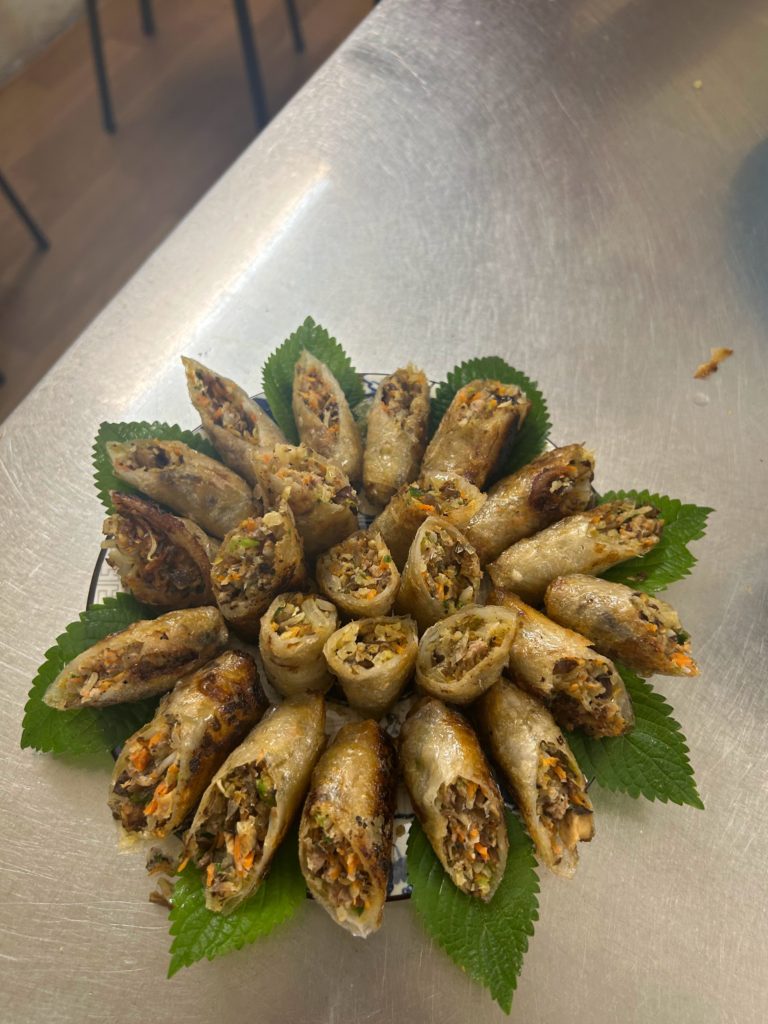

One of the things that bothered me the most about travelling Vietnam was the other tourists making comments like “I hope I don’t get sick eating here” at every establishment we went to. I understand there is some places you don’t eat but use your common sense. But if its a clean restaurant and the tour guide brought us here, its fine. If the restaurant is very busy the the food is being cooked fresh to order, its fine. If you did some research ahead of time, most restaurants and established vendors get their ice from a supplier that used clean water so you’ll be okay. But because its Vietnam, people all the time were complaining and wouldn’t eat the local food because they were scared they were going to get sick. There are more food poisoning stories out of Japan, because they think its clean and don’t think the 8 hour old street sushi that their consuming (its always the raw seafood) will give them any problems. The amount of tourists I see on social media who refuse to have a fresh grilled pork skewer from a popular vendor but will eat sushi from a nigh market that has been sitting out all night baffles me.
The other cooking class we did was very chaotic so its hard to write about it. I loved it and the chef leading was very knowledgeable and organized. She did a great job. Everyone got to pick a dish from her menu which included 75 different dishes and everyone prepared the dish they picked. I have a recipe book of all the dishes but because I only cooked mine, I am not sure what went into all the other ones. Collectively, the group made deep fried spring rolls, lemon grass chili chicken, lemongrass chili shrimp, chicken curry, stuffed squid, mixed vegetable soup, bun cha, and fish cakes. Graham picked the lemon grass chili chicken as that has been one of our favourites at restaurants. I picked the chicken curry.
Both of the dishes were straightforward so instead of explaining the dishes I am going to go over some of the techniques and tips we learned from this cooking class.
If you are making a curry or soup with a potato or yam, or any starch for that matter, fry it before hand so the outside started to caramelize. That will add depth of flavour to your dish and will prevent the vegetables from breaking apart during cooking. Vietnamese food uses a lot of fish sauce. You want a fish sauce that is 20% or higher in fish proteins for a proper flavour. You need a high heat propane burner to get the smoky wok taste. Lemon grass, ginger, and chili is an amazing combination of flavours. I need to work on my meat butchery skills. Fresh coconut milk is really easy to make. Take the pulp and cover it in hot water and then squeeze the pulp and you will get a nice sweet milk.
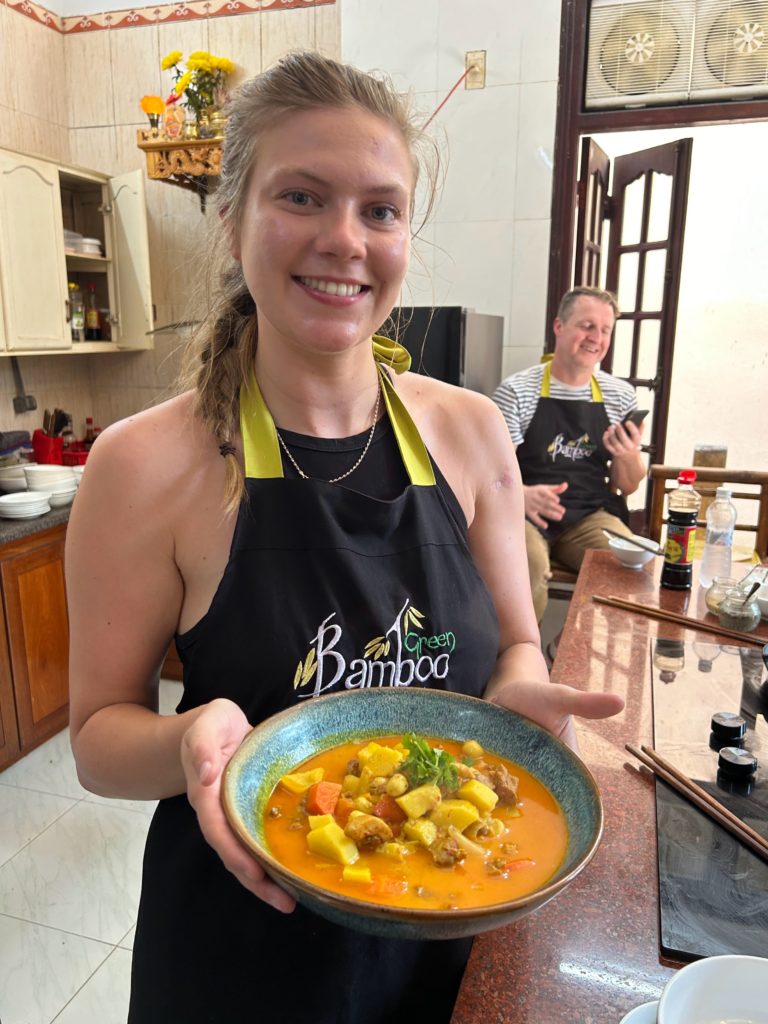
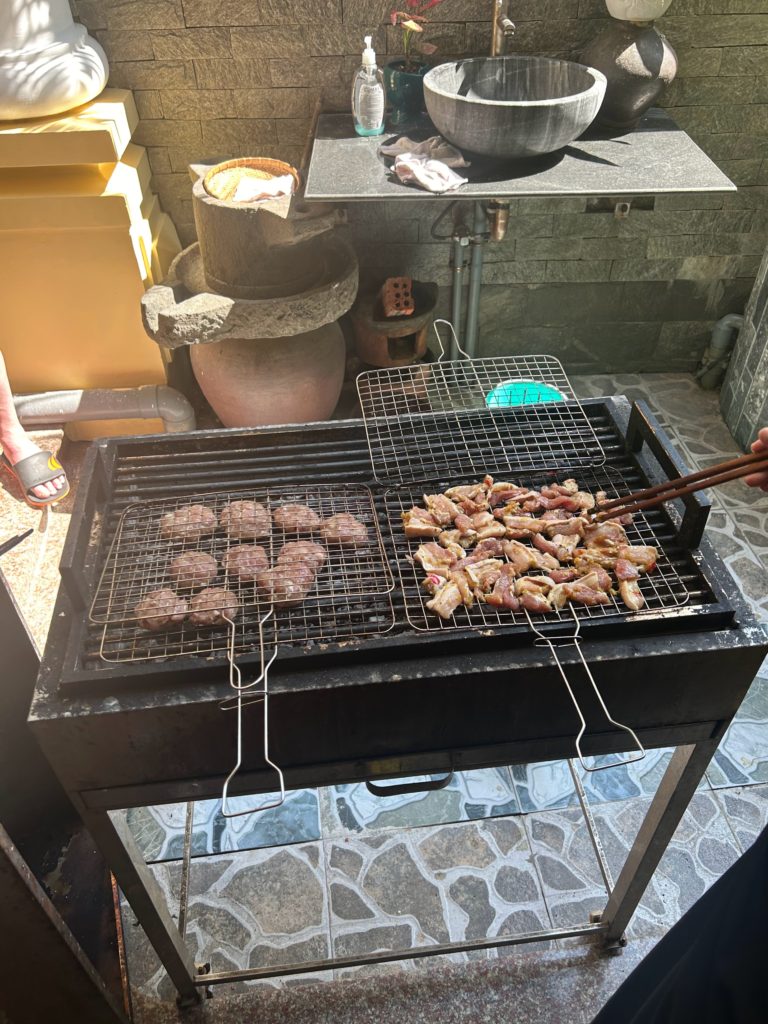
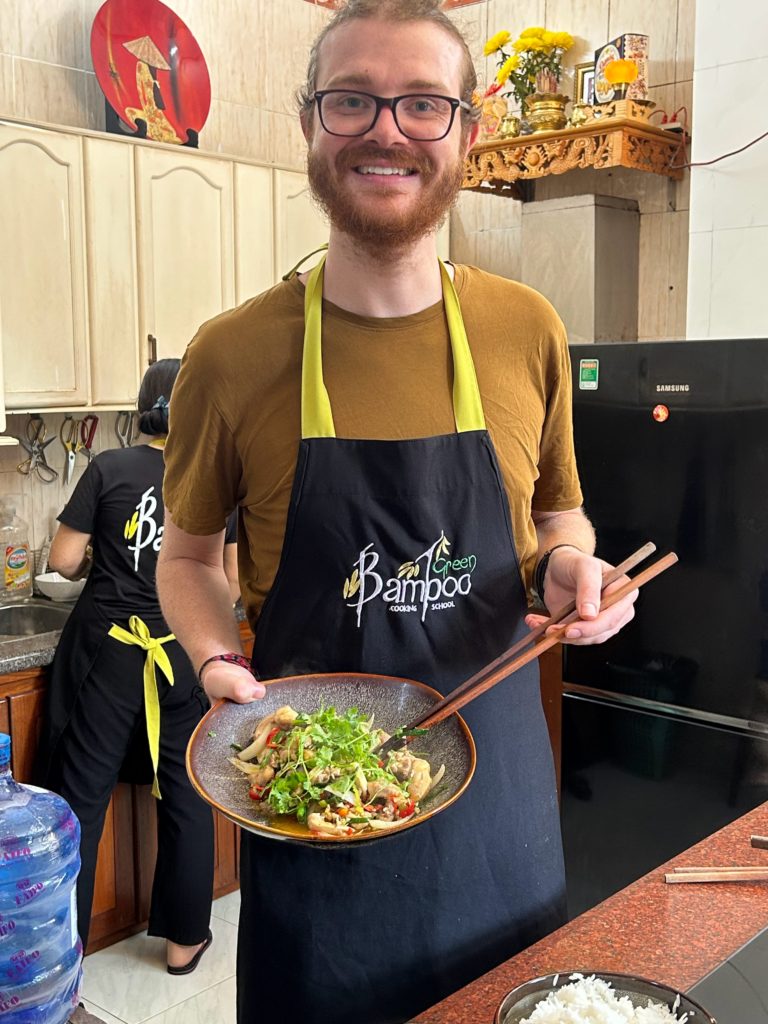
Meals in Vietnam are much different than at home. On the majority of our tours, we had a “family style dinner” with everyone on the tour. This meant everyone would share instead of having one dish to yourself. This means there was usually a couple bowls of rice (always jasmine) and then 5-6 other dishes. These could be fish, stir fried meats, soups, stir fried veggies, egg, tofu, or whatever else.
I personally like these meals more than the ones at home. All the little dishes on the table and you get to fill your small bowl multiple times with all sorts of goodies. These meals were healthier, added more variety of flavours, nutrition, helped with portion control and facilitated a wonderful community aspect for meal time.
Cooking these meals is a challenge though. At home, a good meal will have 2-3 different things on an individual plate. Recipe’s in our cookbooks are built for these kinds of individually plated meals. It saves time to make a lot of two things than a little of six. At least with the techniques I know. These community chefs have a different style of preparation that makes multiple dishes a lot easier, and that challenge is something I would like to take on.


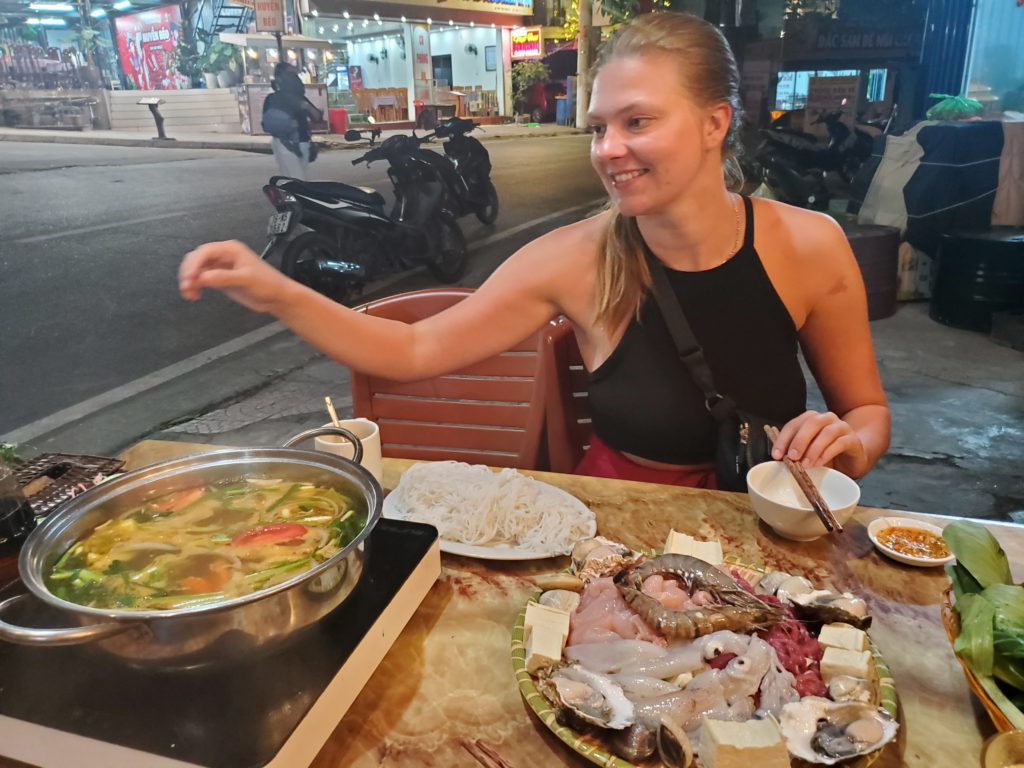

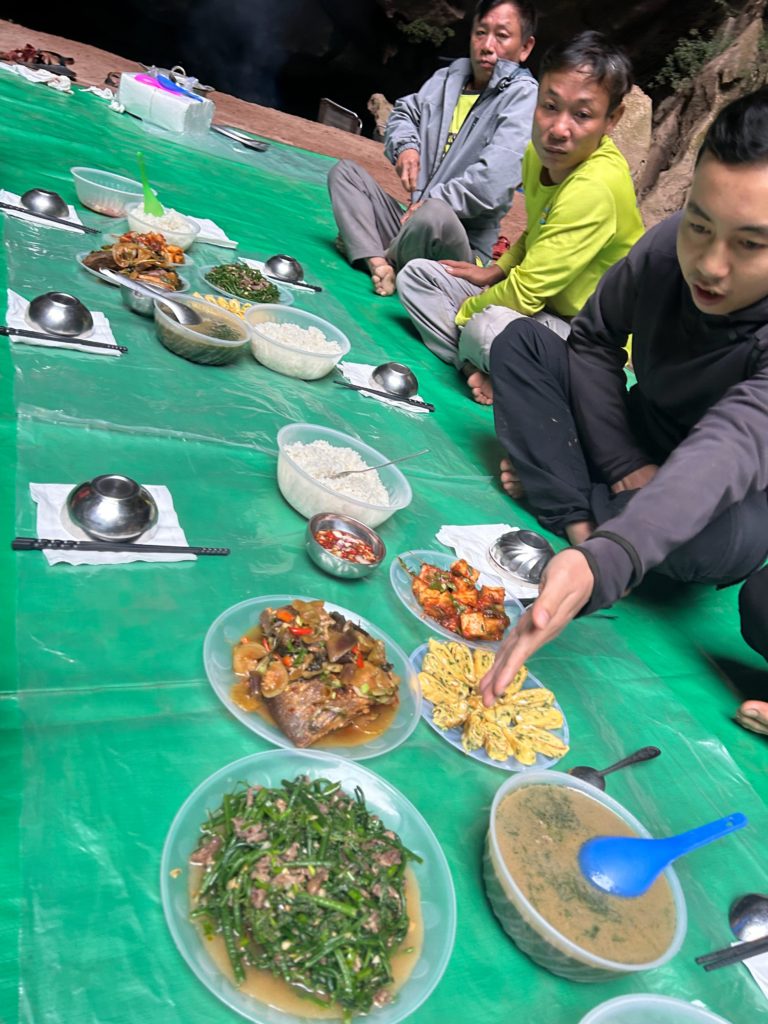
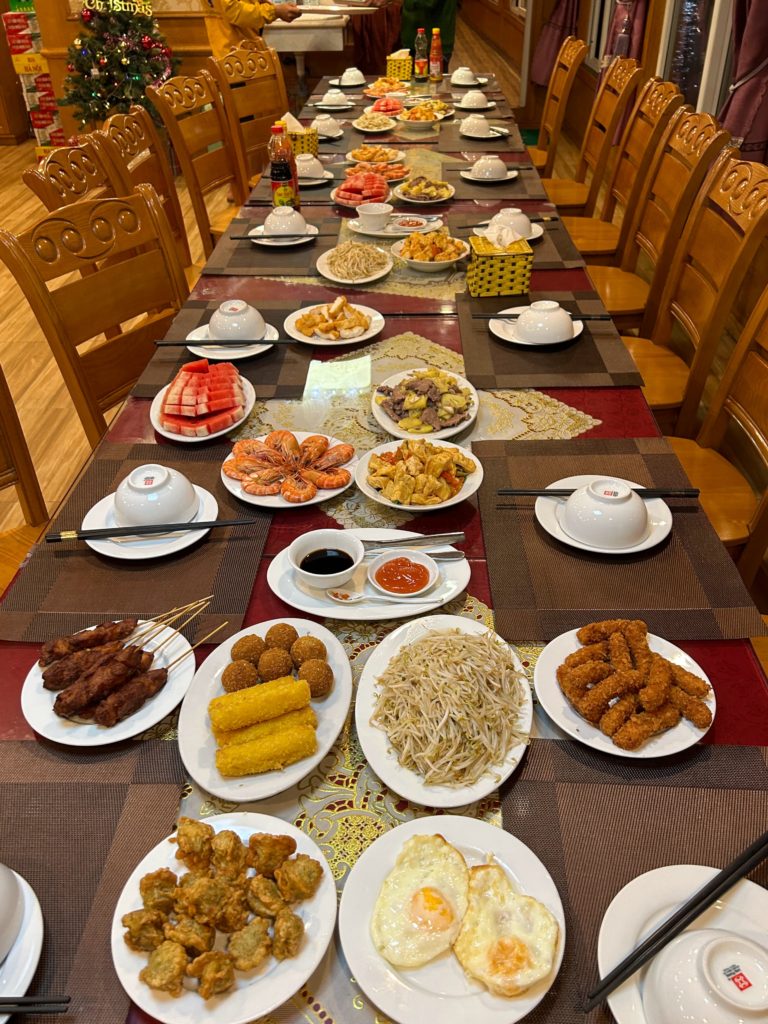
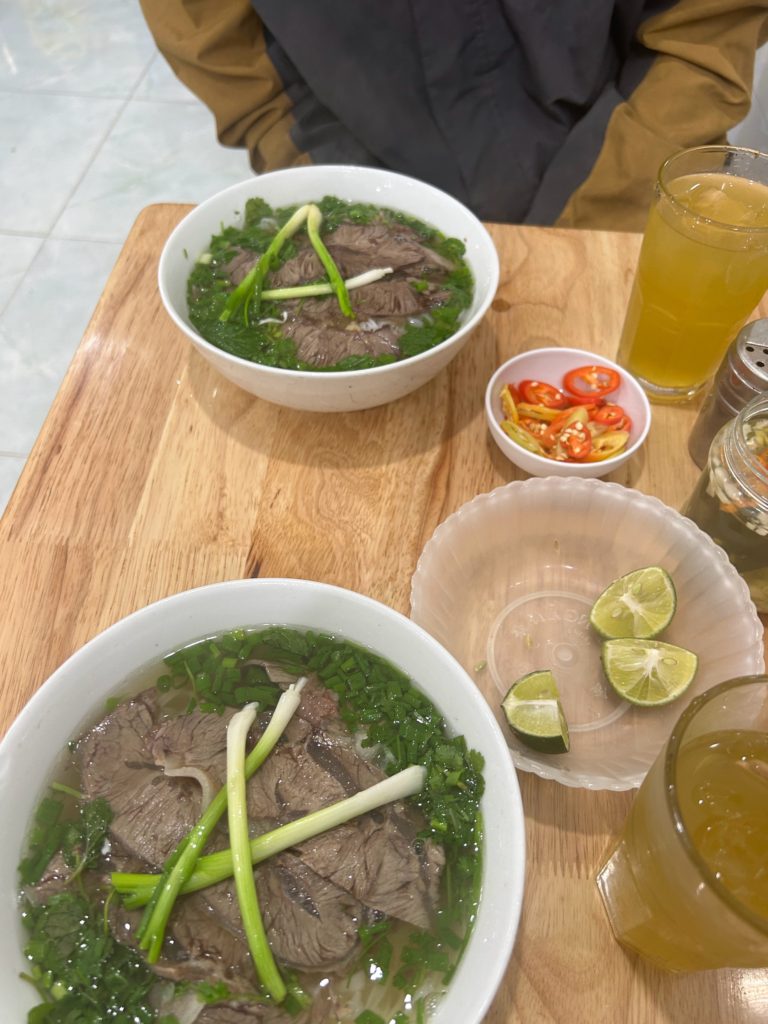
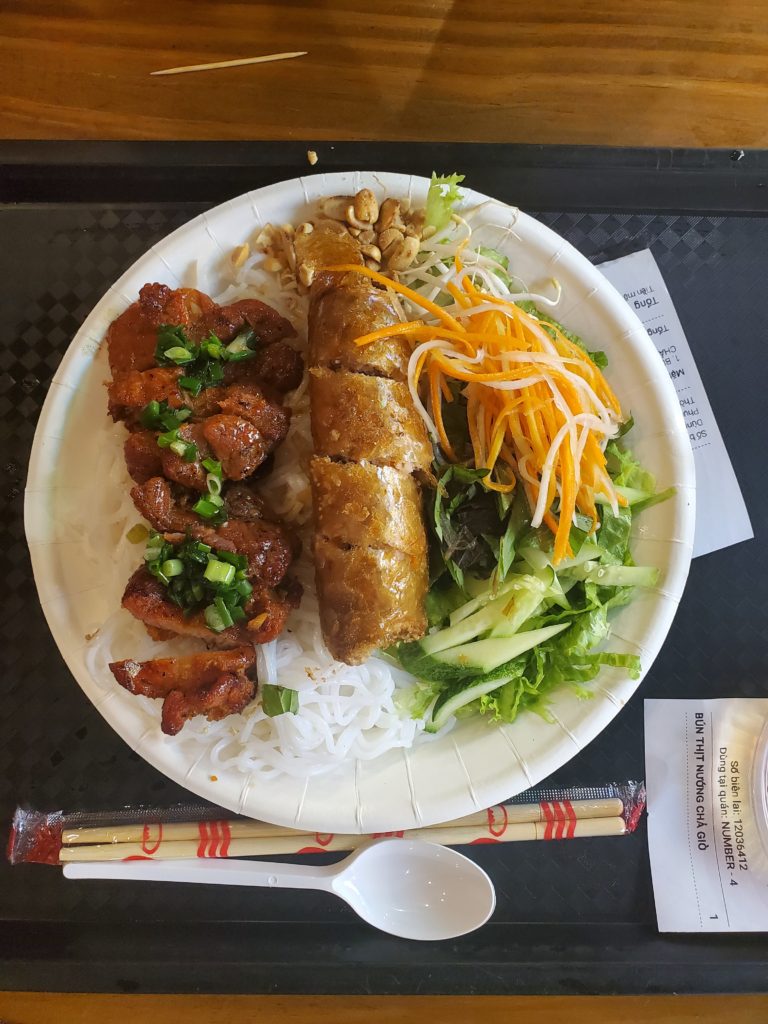
I like the way Vietnamese eat. I think there is a better relationship with food and ingredients. There is a distinct lack of processed foods. The meat and produce are very fresh, and always locally sourced. Ingredients are labelled for their medicinal properties (sore throat, stomach issues etc.) rather than a blanket healthy or unhealthy label. I want to bring a lot of this food philosophy home, and am very excited to start cooking again,

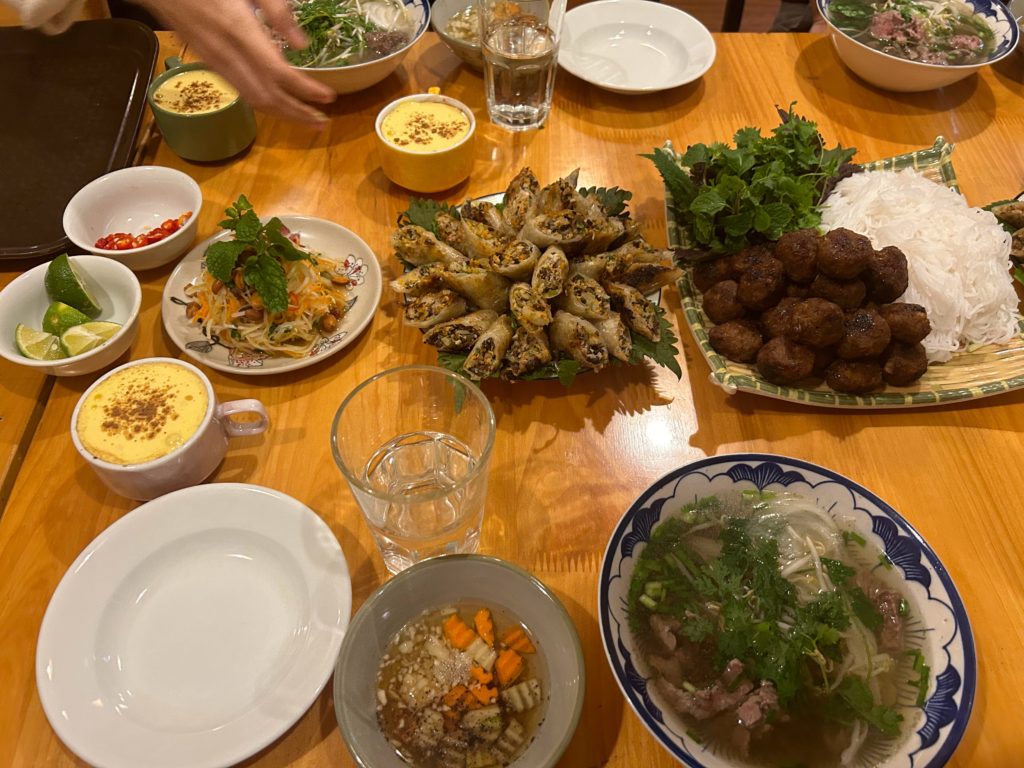
What a wealth of food and cooking knowledge you are gaining from your travels. Thanks for sharing it with us Camryn. Everything looks so delicious.
Well done Cam, am envious of your Viet food tour & food knowledge. I like the aspect of fresh from the farm to the market to your restaurant plate all in one day. There is much to be championed for in the eat local food ethos, easier said than done in Viet vs home.
I like Viet food too, one of the understated great cuisines of the world, good on yourselves for taking full advantage of your opportunity and personal interest.
I am so excited for you to cook for us!!!!!